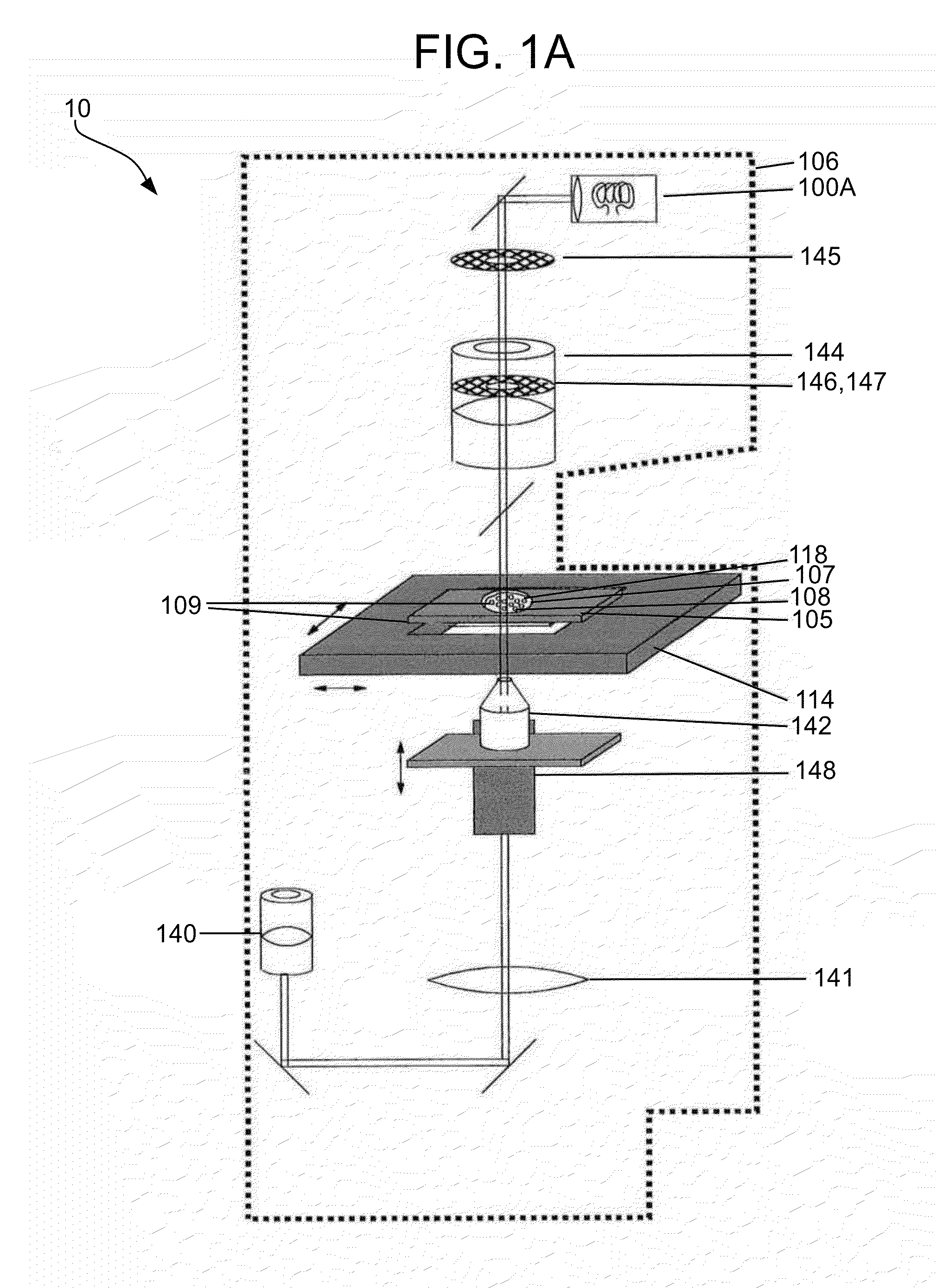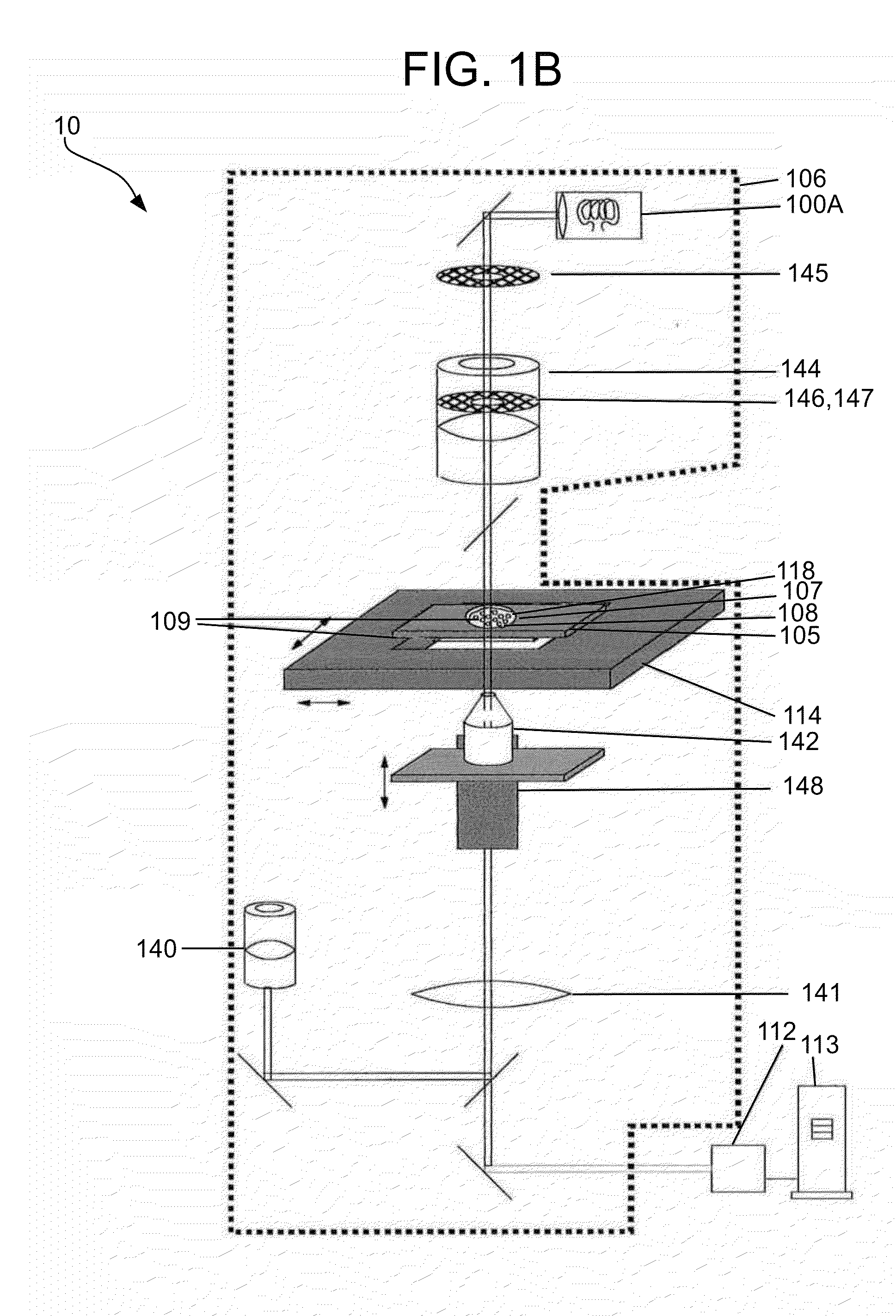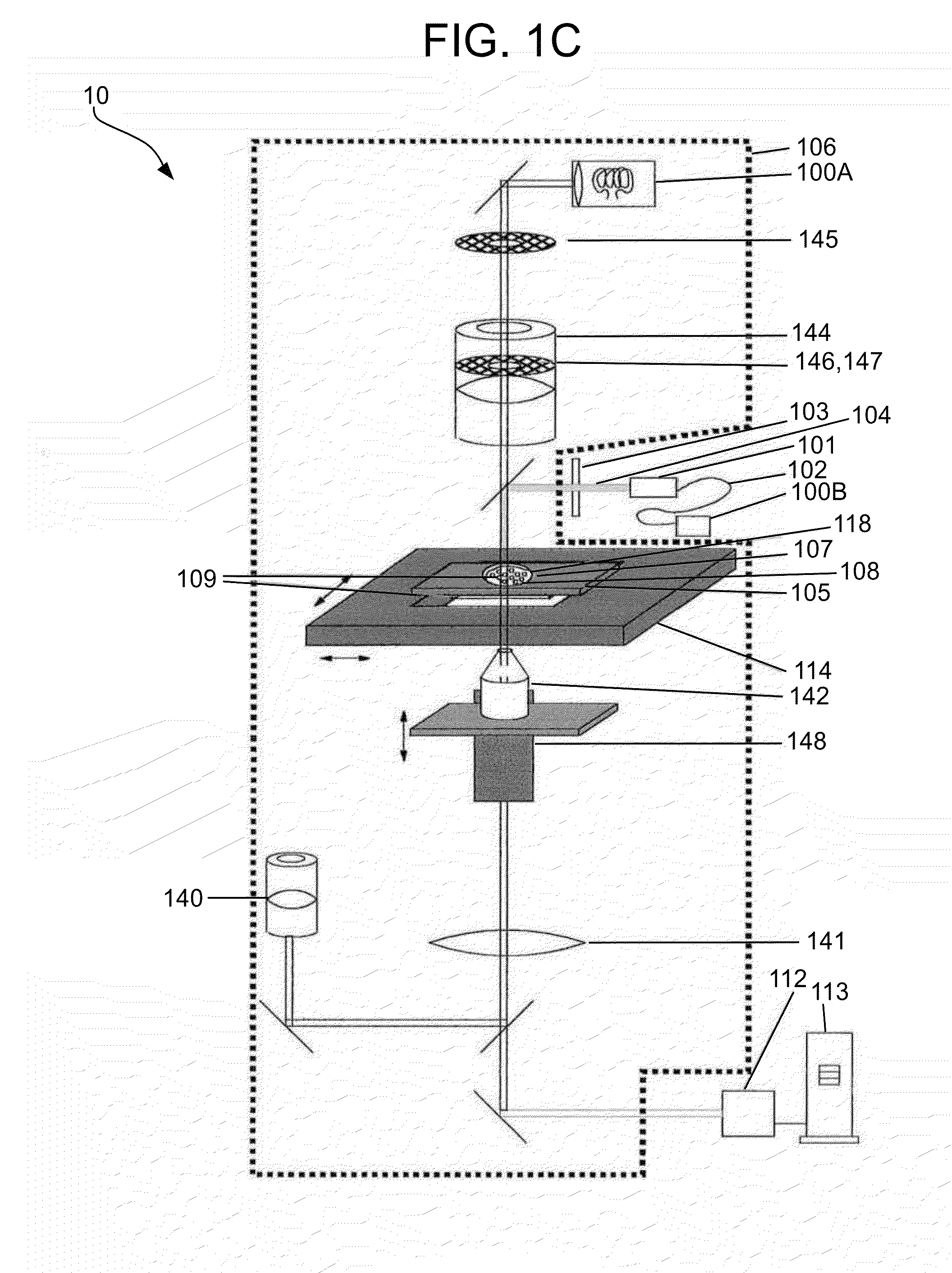Methods and apparatuses for detection of positional freedom of particles in biological and chemical analyses and applications in immunodiagnostics
a technology of positional freedom and particle, applied in the field of methods and apparatuses, can solve the problems of reducing data quality, long incubation time, added expense, etc., and achieve the effects of reducing the amount of positional freedom, increasing the amount of particle motion, and enhancing the degree of movemen
- Summary
- Abstract
- Description
- Claims
- Application Information
AI Technical Summary
Benefits of technology
Problems solved by technology
Method used
Image
Examples
embodiment 1
[0150]In one embodiment consistent with the present invention, the sample holder 105 includes a simple microscope slide made of glass or plastic, with the particles 108 being disposed or settled on its transparent surface 109 (see FIGS. 1A-1C). Typically a cover slip will be placed over the sample.
embodiment 2
[0151]In yet another embodiment consistent with the present invention, the transparent sample holder 105 includes a simple passive microfluidic cartridge 116 (see FIG. 1F). In this embodiment, the closed sample microfluidic cartridge 116 includes two ports (i.e., inlet 401, outlet 402) and a chamber 118 therebetween (see drawing A). A sensing array 200 is bonded underneath with capture surface regions 210, 211, 212, and is treated with the appropriate chemistry for the particular application desired. The sample solution 107 of particles 108 is introduced into the inlet 401 and the particles settle onto the surface 109, and capture surface regions 210, 211, 212 of sensing array 200 (see drawings B-D). Binding interactions may be observed using the microscopy apparatus 10.
embodiment 3
[0152]In yet another embodiment consistent with the present invention, the transparent sample holder 105 includes a well plate (standard microtiter plate or custom well plate or other cartridge with wells). In this embodiment, the open well sample cartridge 161 includes a transparent sample holder 105 with an opening in the center for a chamber 118 (see FIG. 1G, drawing A). A cover glass 162 is bonded underneath. The cover glass 162 will be treated with the appropriate chemistry for the particular application desired. A cap (like cap 417 in FIG. 1H, for example) may be disposed over the opening to the chamber 118. A sample solution 107 of particles 108 is disposed in the chamber 118 and settles on the surface 109, including capture surface regions 210, 211, 212 (see FIG. 1G, drawings B-C), and binding interactions may be observed using the microscopy apparatus 10.
PUM
| Property | Measurement | Unit |
|---|---|---|
| coherence length | aaaaa | aaaaa |
| coherence length | aaaaa | aaaaa |
| distance | aaaaa | aaaaa |
Abstract
Description
Claims
Application Information
 Login to View More
Login to View More - R&D
- Intellectual Property
- Life Sciences
- Materials
- Tech Scout
- Unparalleled Data Quality
- Higher Quality Content
- 60% Fewer Hallucinations
Browse by: Latest US Patents, China's latest patents, Technical Efficacy Thesaurus, Application Domain, Technology Topic, Popular Technical Reports.
© 2025 PatSnap. All rights reserved.Legal|Privacy policy|Modern Slavery Act Transparency Statement|Sitemap|About US| Contact US: help@patsnap.com



